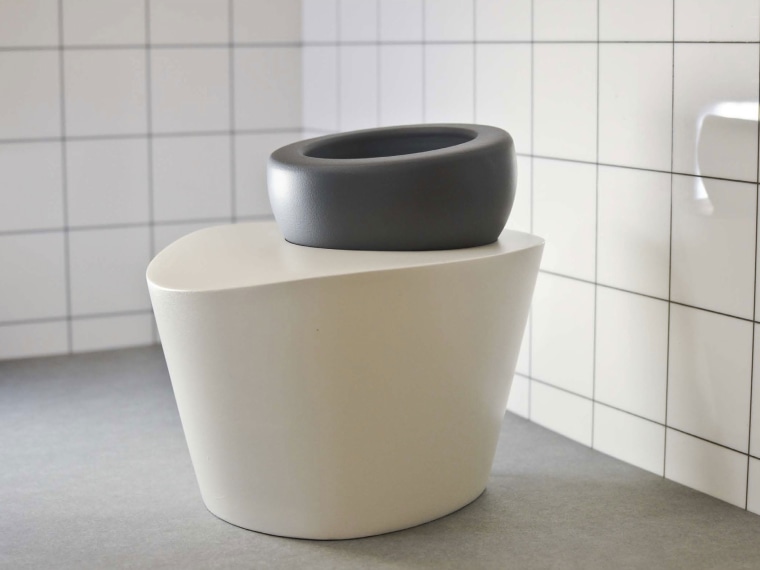Despite its relatively staid presence in industrialized regions like the United States and Western Europe, the toilet could stand a technological makeover. Three up-and-coming industrial designers may have found just the thing that the modern toilet needs to remain abreast of technological innovation, as they recently demonstrated with an award-winning prototype for a new kind of toilet that subtly reconfigures the user's posture while providing a plethora of biometric feedback.
In honor of World Toilet Day last month, three students from Central St Martin’s College at the University of Arts London — Sam Sheard, Pierre Papet, and Victor Johansson — took part in a competition that was put on by the U.K.-based plumbing company Dyno-Rod Drains. The objective? To design "the toilet of the future" and help "raise awareness on how we can upgrade the current 130 year old flush toilet to one that benefits our health and the environment."
Their winning prototype, the "wellbeing toilet," introduces many high-tech innovations to the modern can — Johansson and Papet said that it could eventually be used to analyze a user's waste to monitor for health defects such as diabetes or kidney diseases, and could even provide information about nutritional deficiencies or pregnancy.
But the real "game-changer" that the trio wanted to bring to the wellbeing toilet was something far more basic, Johansson and Papet told NBC News in an email. Being students of industrial design, they were most interested in reconfiguring the basic shape of the toilet into a sort of hybrid between the chair-like structure of modern toilets and angular position of "squat toilets."
"The sitting position is wrong" in modern toilet design in most Western countries, Johansson said. "The natural position for a human to sit is in a squatting position." Most modern toilets push users into a 90-degree upright sitting position much like the one people adopt when, say, sitting at a desk or dinner table.
This position, Johansson said, "is obstructing the bowels" whenever people go to the bathroom, which can lead to many health problems such as constipation to more serious colon infections.
The problem with trying to redesign something like a toilet, however, is that "it is incredibly difficult to introduce something new" since, like many basic pieces of furniture like chairs or tables, it's "something most people use all the time without giving it much consideration," Papet said.
"If you asked a toilet customer in the UK if he would consider buying a squatting toilet he would laugh at you," he added.
The design they settled on, therefore, attempts to subtly nudge users into "overcoming these apprehensions and help get them into a position they're not used to anymore," Papet said. It still allows for a traditional sitting-type position, but the slight forward-leaning angle of the seat that juts up from the base of the structure allows bathroom-goers to perch their feet on the edge of the device as they heed nature's call.
Don't expect toilet technology to change overnight, however. Both Papet and Johansson admit that this project began as a curiosity on their part when they first learned of the competition, and as a result it still remains firmly in its "prototype" stage.
"It would need to be discussed with engineers and manufacturers to be viable [for increased production]," Papet said, "but the basic are there."
But even if bathroom-goers the world over were suddenly to adopt a new toilet paradigm such as this one, Eduardo Kausel, a professor of civil and environmental engineering at the Massachusetts Institute of Technology (MIT), said that squat toilets could pose some problems of their own.
"My sense is that the danger with squatting is that you might miss the bowl," Kausel told NBC News.
Pierre and Victor both admitted that there might be some initial discomfort when it comes to adopting a new standard for going to the bathroom. But that's also part of the point.
"Essentially, this toilet is forcing a new way of sitting which to a large extent doesn't exist, culturally speaking, in the west yet," Johannes told NBC News. "But I think when people start realizing the benefits they might be tempted to switch."
Yannick LeJacq is a contributing writer for NBC News who has also covered technology and games for Kill Screen, The Wall Street Journal and The Atlantic. You can follow him on Twitter at @YannickLeJacq and reach him by email at: Yannick.LeJacq@nbcuni.com.
